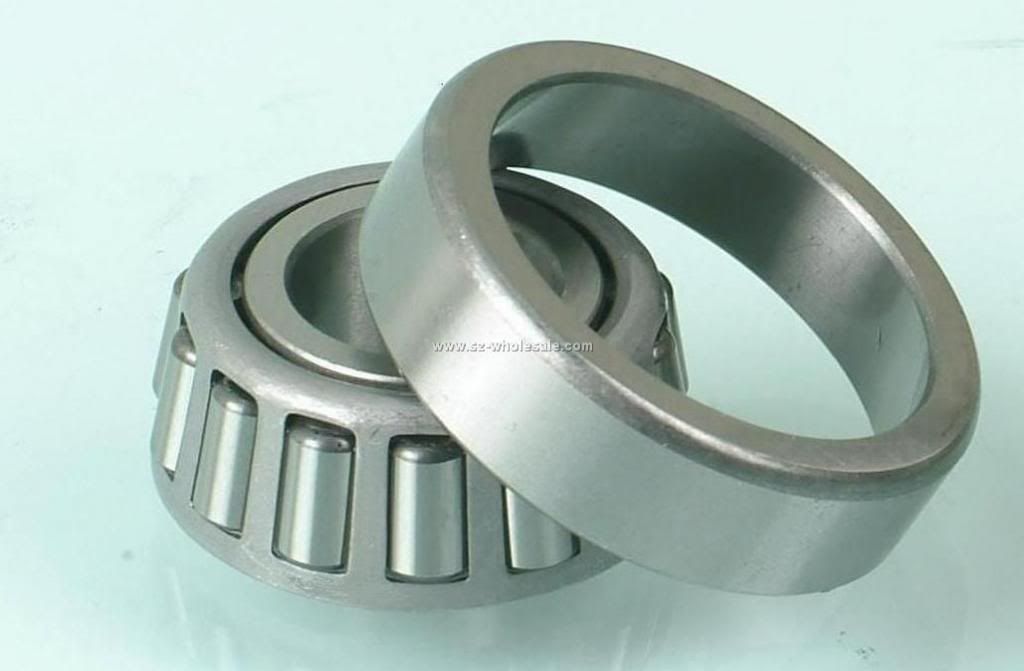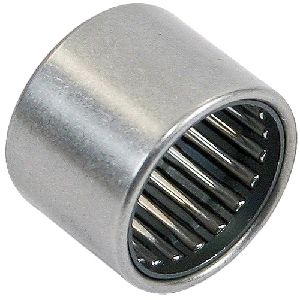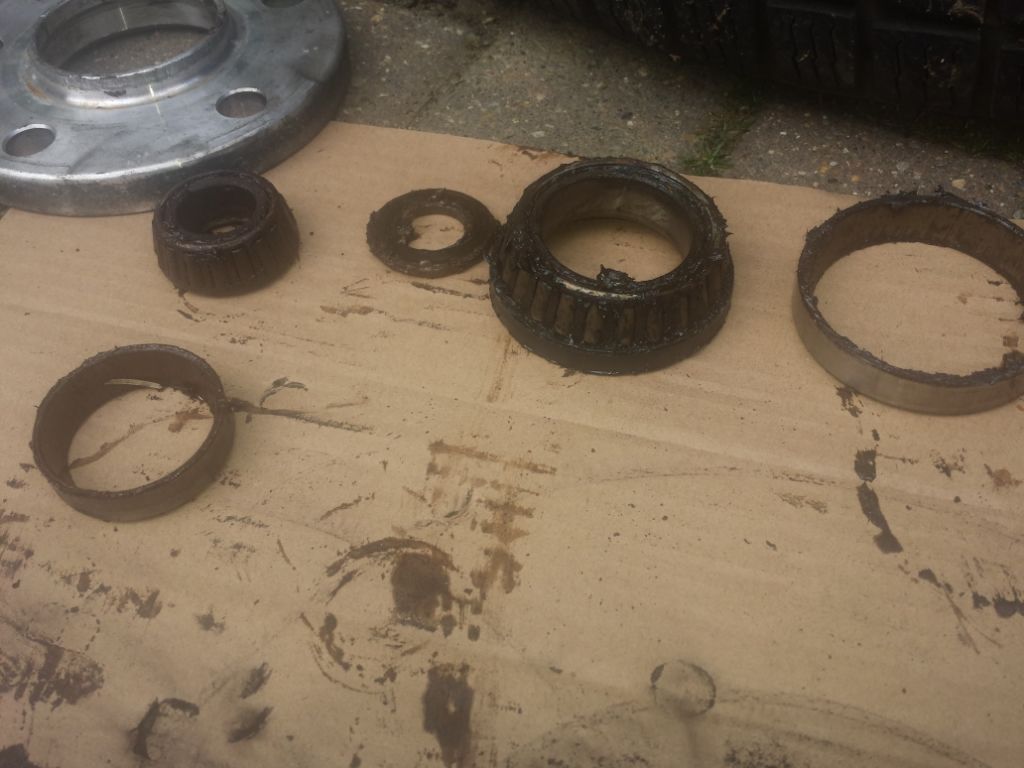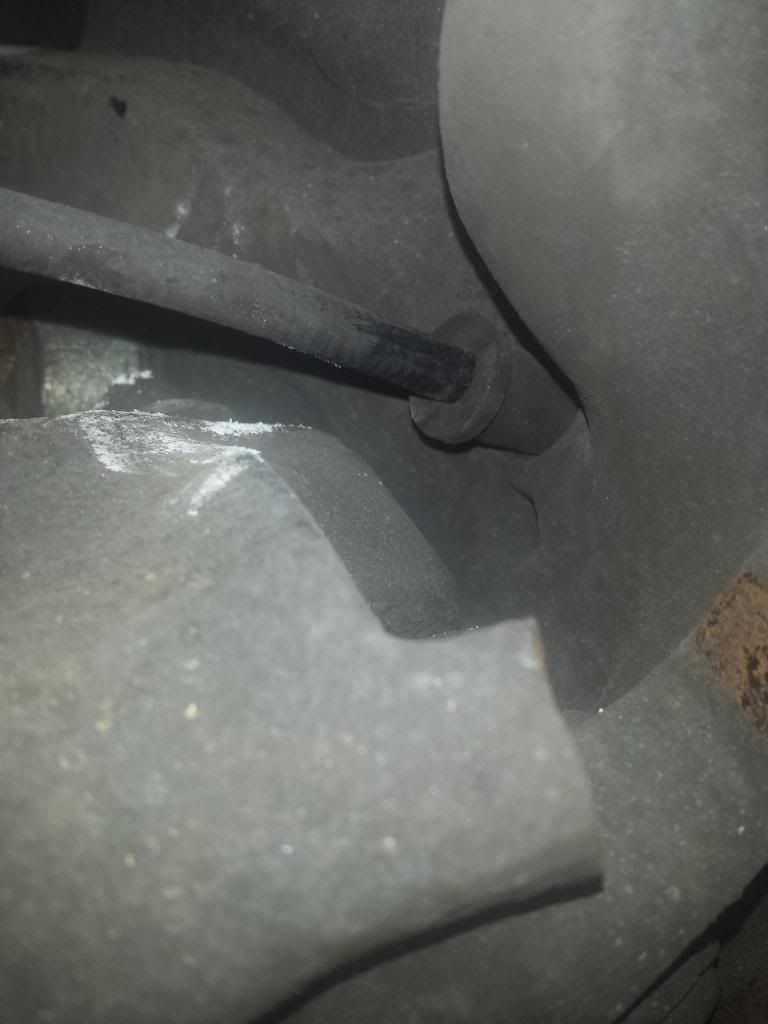so how do you know that your wheel bearing requires replacement ? Usually it starts with a noise, this can be very subtle, it can creep up on you slowly so you dont really notice it.
It can be a droning sound.... imagine the sound of a plane speeding down the runway about to take off, it is directly proportional to speed .Although with my van above 50 mph I couldnt hear it because of all the other noises !
Trying to identify which side that is making the noise can be tricky ... holding a constant arc around a corner at a constant speed can help you determine what side it is, as you go round a right corner weight is transferred to the left side, if the noise increases then its the left side that is faulty and vice versa.
In my experience its the left side ( in this country ) that will fail first/more often , as this is where most of the pot holes are and this side gets the toughest time of it... if in doubt I always start this side first.
My van is a 1985 2wd , this is relevant as it is very important to work out which bearing is the correct one for your vehicle . VW had a component change around 1984 and the bearings are a different size and NOT interchangeable .
Have a look here.... https://www.brickwerks.co.uk/index.php/ ... l?___SID=U" onclick="window.open(this.href);return false;
This link explains the chassis number change over .
Another thing to realise that the 2wd front bearings are tapper bearings, this is fairly unusual on the front of vehicles , luckily for us as it makes changing them much simpler than on the Syncro where they are pressed in and require a hydrophilic press.
Being tapper roller bearings does confuse some MOT testers , who wrongly feel slight play and think its a problem.
To change the bearings I would allow 1.5 hours per side the first time you do one, no point rushing, it is critical that you get everything correct as a wheel falling of will spoil your day. Having said this , it is basic nuts and bolts stuff so very doable for a confident home DIY mechanic.
Tools required.
19 mm socket
axle stand
jack
Breaker bar
Torque wrench
T bar ( optional )
large flat blade screwdriver
small flat blade
hammer
drift
bungee chord
rags
jack the van up and put the axle stand securely underneath. ( it amazes me that some people dont bother.... its your life, your choice )
Grab hold of the wheel top and bottom and see if you can rock it, there should be very slight movement , its hard to derscibe just how much but you should feel it.
I always do this before I take it apart so that I can compare with what I have after reassembly... that way if there is a huge difference I know that something is wrong .
Next remove the wheel .
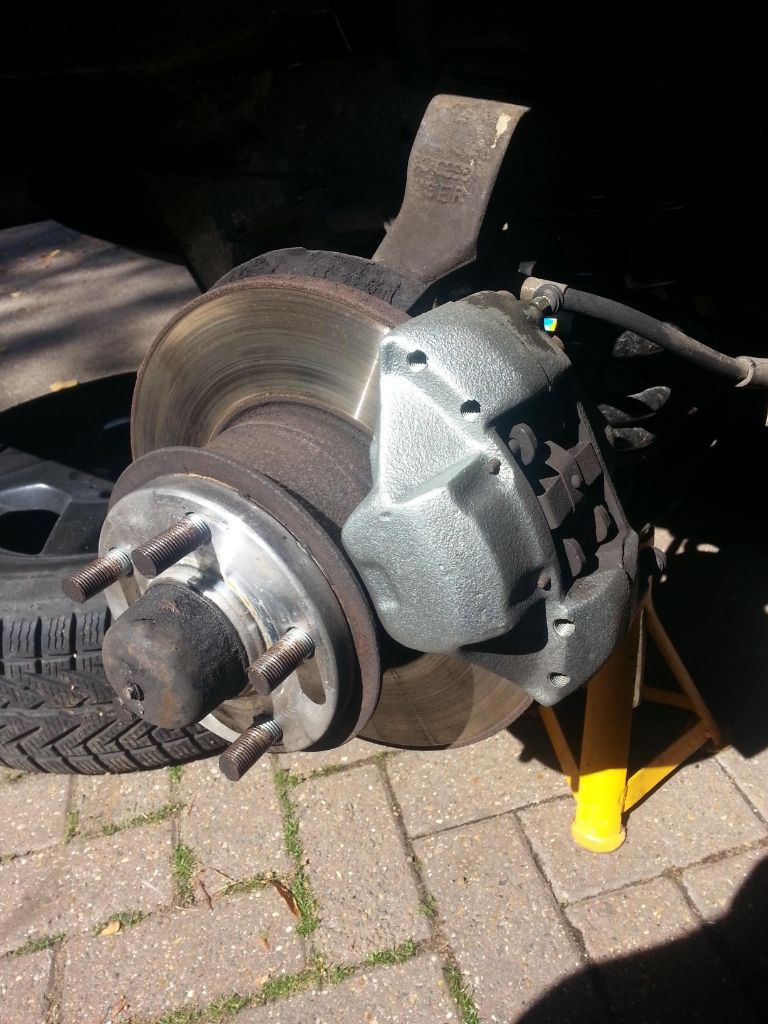
As I am doing the nearside you will see that the speedo drive is located in the bearing cover, with a small flatblade remove the c clip holding it in place, dont lose it !
next use the large flat blade to prise of the bearing cap
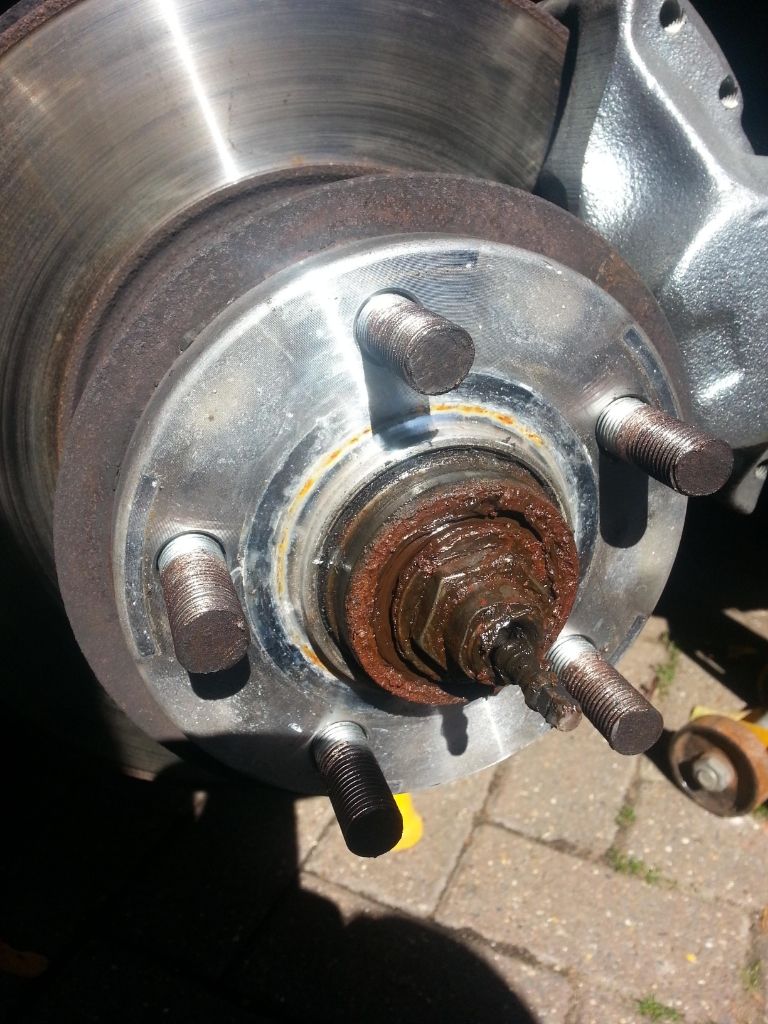
you will notice how brown the grease looks... this is because water has got into the bearing, causing it to rust and ultimately fail.
next it is necissary to remove the brake calliper
With the large flat blade, gently move the pads away from the disk a few mm, this will help with removal and refitting of the calliper.
Then undo the 2 19mm bolts holding the brake calliper on,
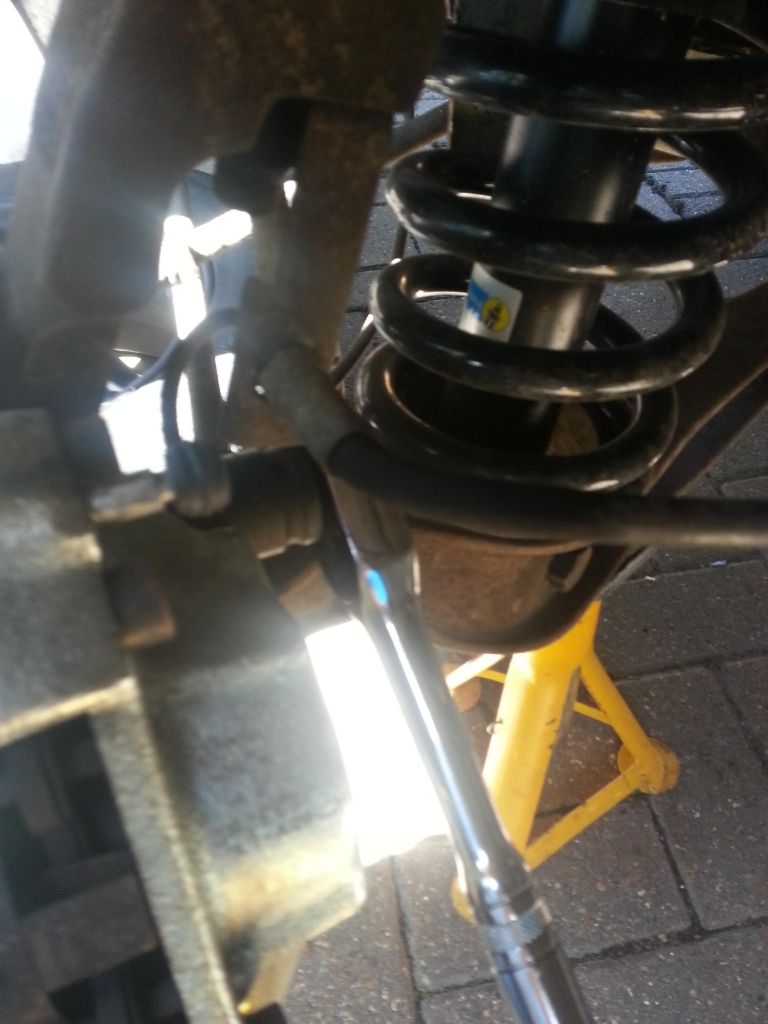
These bolts are different so remember which one goes where.
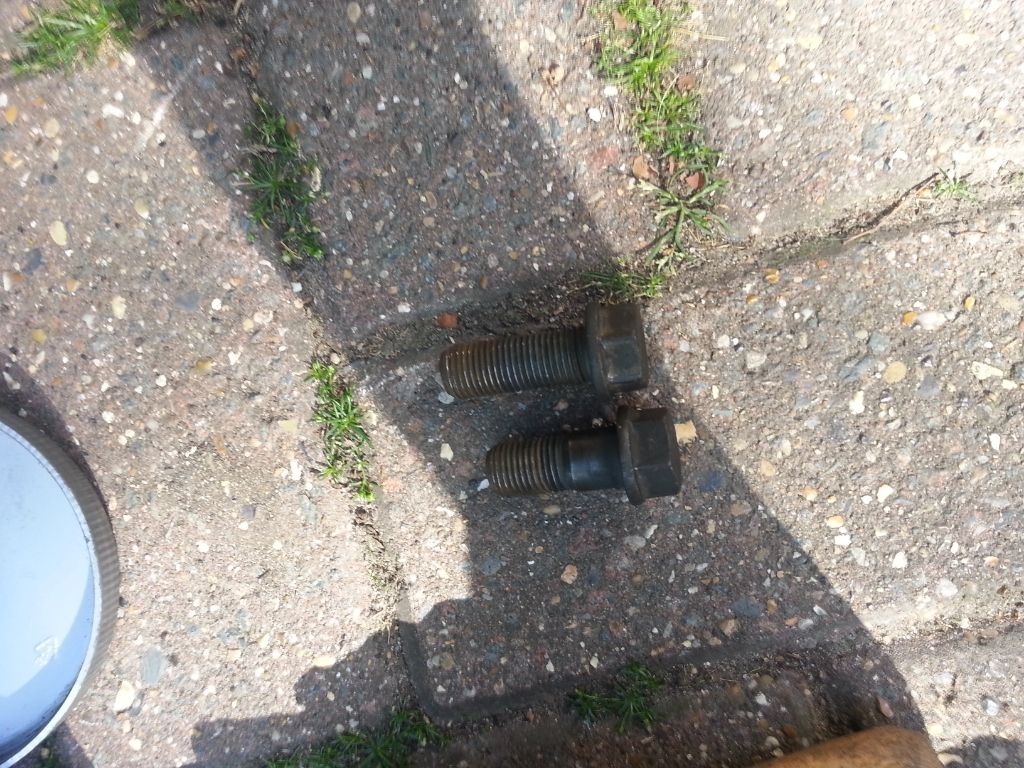
the metal brake pipe is held in place by a bracket, to save removing the pipe then having to re bleed the system, gently bend this bracket away to give yourself room to swing the calliper away. Support the calliper with the bungee strap

next undo the nut holding the brake disk and bearing assembly on.
The nut holding it in place is called a peen nut, basically a nut with a long skirt on that you bend into a recess on the spline to stop it coming loose . Another method is a split pin and castle nut, both work well.
Use the screwdriver and hammer to lift the bent metal on the peen nut out of the recessed area, then undo the nut, it may be slightly stiff because of the mis shaped part of the nut .
remove the nut and take notice of a flat washer , this will need to be replaced and you wont get a spare with the new bearing kit.
lift of the disk assembly

leaving the stub axle
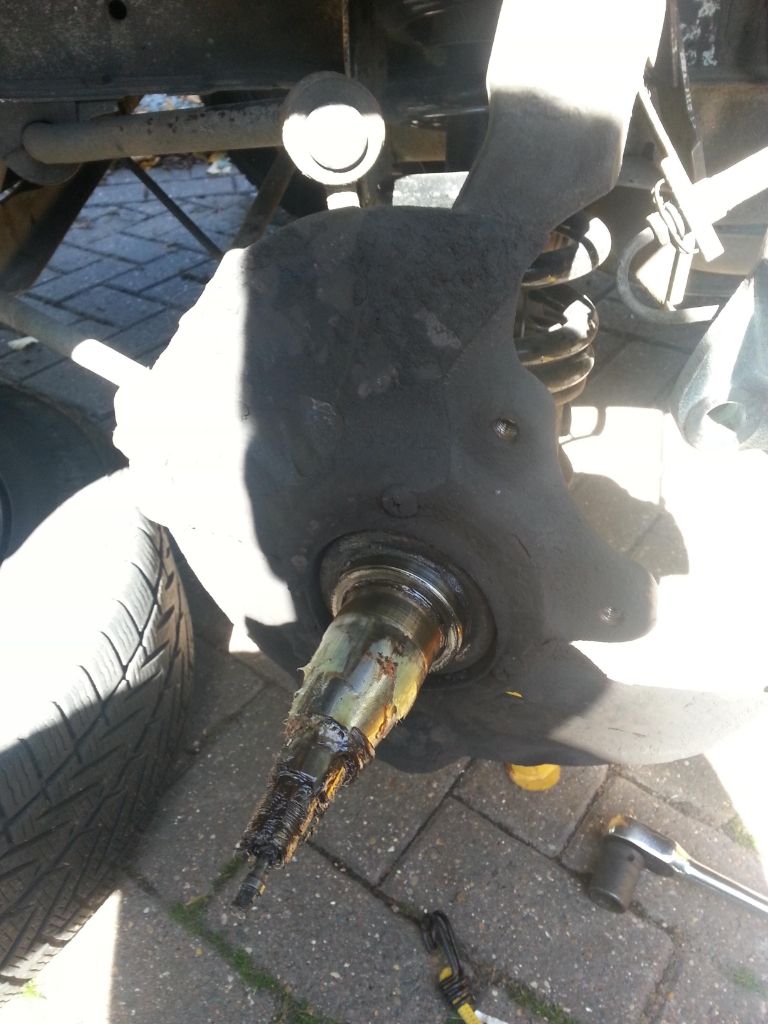
The outer bearing will now fall out, notice the colour.
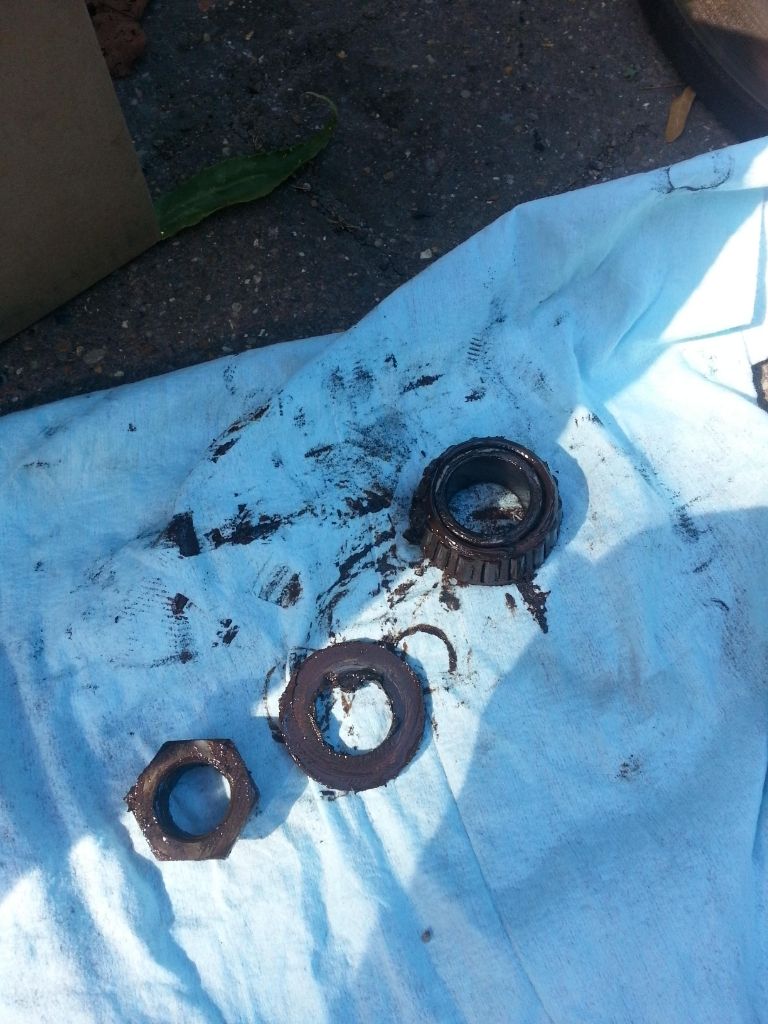
flip the assembly over and remove the seal ( look what way it goes ) using a flat blade.
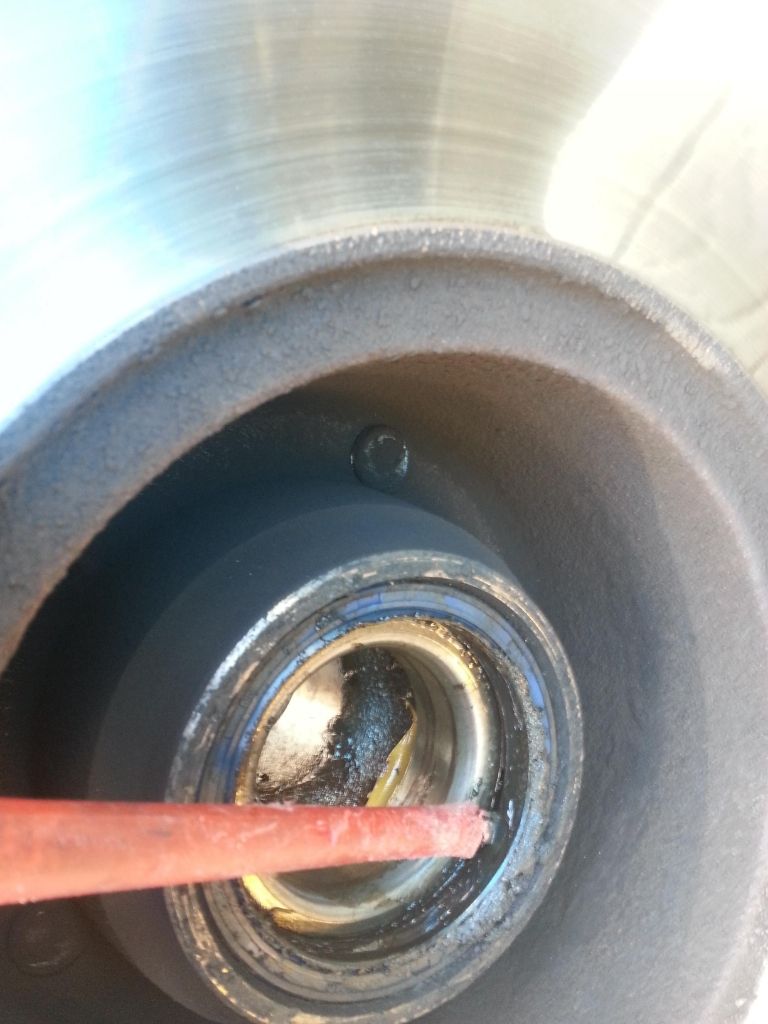
The inner larger bearing will now fall out.
next you need to remove the outer casing for each of the bearings, these are quite a tight fit and will need to persuaded out with a drift or old flat blade and a hammer, from the back side you can just see the lip for the front bearing , place your drift/screwdriver against it and give it a hit... move the drift to the opposite side of the case and repeat, with a few clouts it will soon pop out,
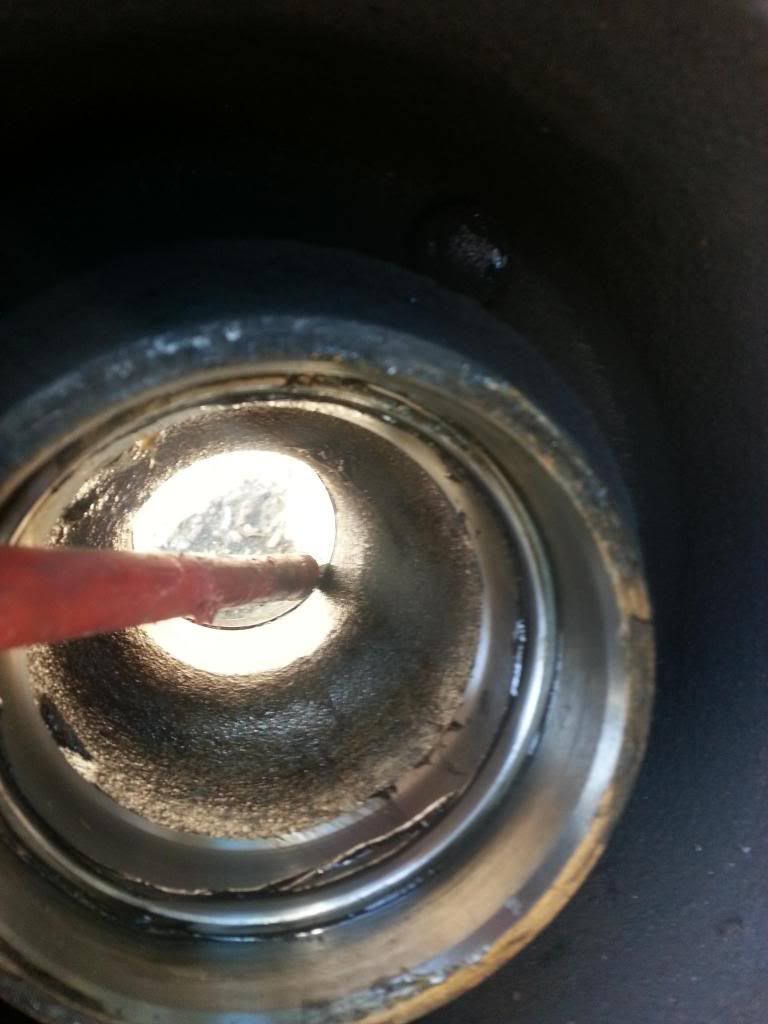
flip over and repeat for the other bearing case.
clean all the old grease out, careful not to contaminate the brake disk !
Next put in the new casing, you will need to hammer it into place , get this the correct way round ! tapper facing out so the hole gets smaller as you look into it.
use the old case to help start the new one nice and squarely into the hub.
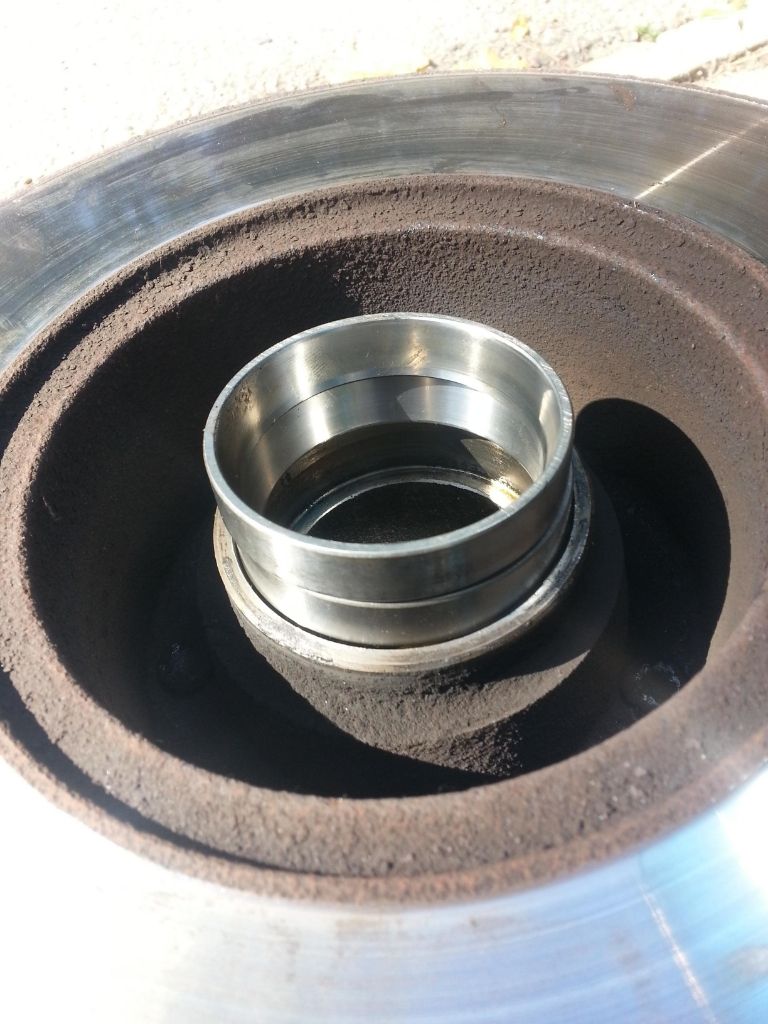
once it is nearly fully in remove the old casing ( you dont want to get this stuck back in the hub aswell ) go around the case with a drift and hammer, being careful not to damage the surface ! you will know when its fully seated as the noise will change as you hit it. I always go around again at least twice just to be sure its seated fully.
repeat with the other side bearing.
Pack out the bearing races with grease ( cheaply available from any motor factors ) make sure that the grease is pushed into every roller bearing, more is better !
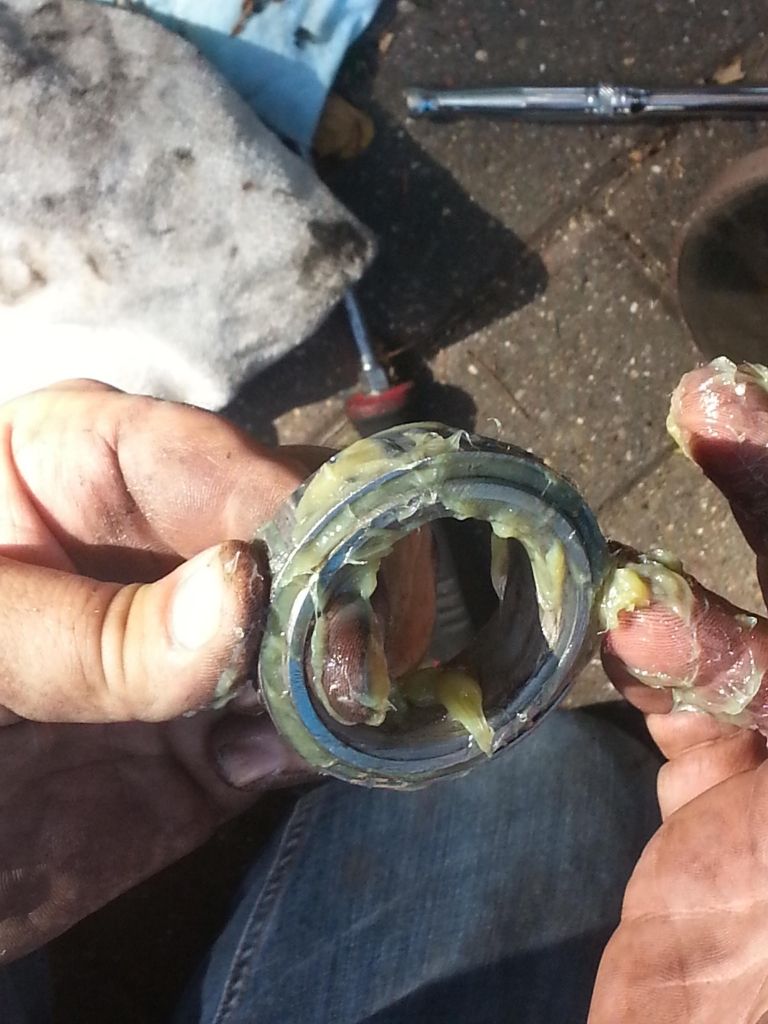
re grease the stub axle
refit the hub onto the stub axle, pushing it fully home... if you cant see this much thread showing then its not fully on, rotate and give a gentle push,

remembering to fit the flat washer with the locating bit in the right place.
fit the new peen nut and tighten whilst rotating the hub assembly.
I use a T bar and socket for this, I find it gives me much more feel, now at this point tighten fairly tight This will ensure that the bearing is seated properly, now undo the nut again.... this next bit is all part of the feeling that you will get on how tight to tighten the nut. I use the T bar and spin the the nut, the momentum of the T bar will provide the correct amount of torque.... basically just tighter than finger tight , this is a technique that In was taught as an apprentice and have always used successfully for tapper roller bearings , and have never had a problem.
Next refit the wheel and tighten ..grab hold of the wheel top and bottom and feel for slight play, it should be similar to how it felt before you started ( unless of course you had total bearing failure and collapse before ! ) If too much or too little then adjust the peen nut... once happy that all is as should be , tap the peen nut with a blunt screwdriver or punch, deforming the skirt into the recess on the stub axle this will stop it coming undone all on its own .
Refit the brake caliper, torque the nuts to the correct torque for your brakes/model
Refit the speedo drive into the bearing cover with the c clip, lower the van and torque the wheel nuts to your vans/ wheel specification.
Remember to pump the brake pedal to remove the play from the calliper caused when you moved the pads earlier.
Take for a drive and rejoice in the silence....
I hope this will help anyone attempting this for the first time
As with everything, slow and steady... check and double check. If unsure ask someone,
( edited to bring links up to date )


